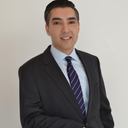Is it because they are using the settings too high? Or because the person is thin to begin with? Is it dangerous to stack lines? Will that create "bulk heating" that may overwhelm the face/body and cause damage? Is the tech to blame? The way a person heals? The settings on the machine? What are the training requirements to perform Ultherapy?
Answers (6)
From board-certified doctors and trusted medical professionals
Dr. Edwin Ishoo, MD
Facial Plastic Surgeon, Board Certified in Otolaryngology – Head and Neck Surgery
Answer
Dr. Cory Torgerson, MD, PhD, FRCSC - Account Suspended
Facial Plastic Surgeon, Certified in Otolaryngology – Head and Neck Surgery
Answer
More Ultherapy Questions
See all Ultherapy Q&AWE SEND PRETTY
EMAILS
What’s trending? Who’s turning heads? Which TikTok myths need busting? We’ve got you. No fluff, no gatekeeping—just real talk. Get our free, unfiltered newsletter.


